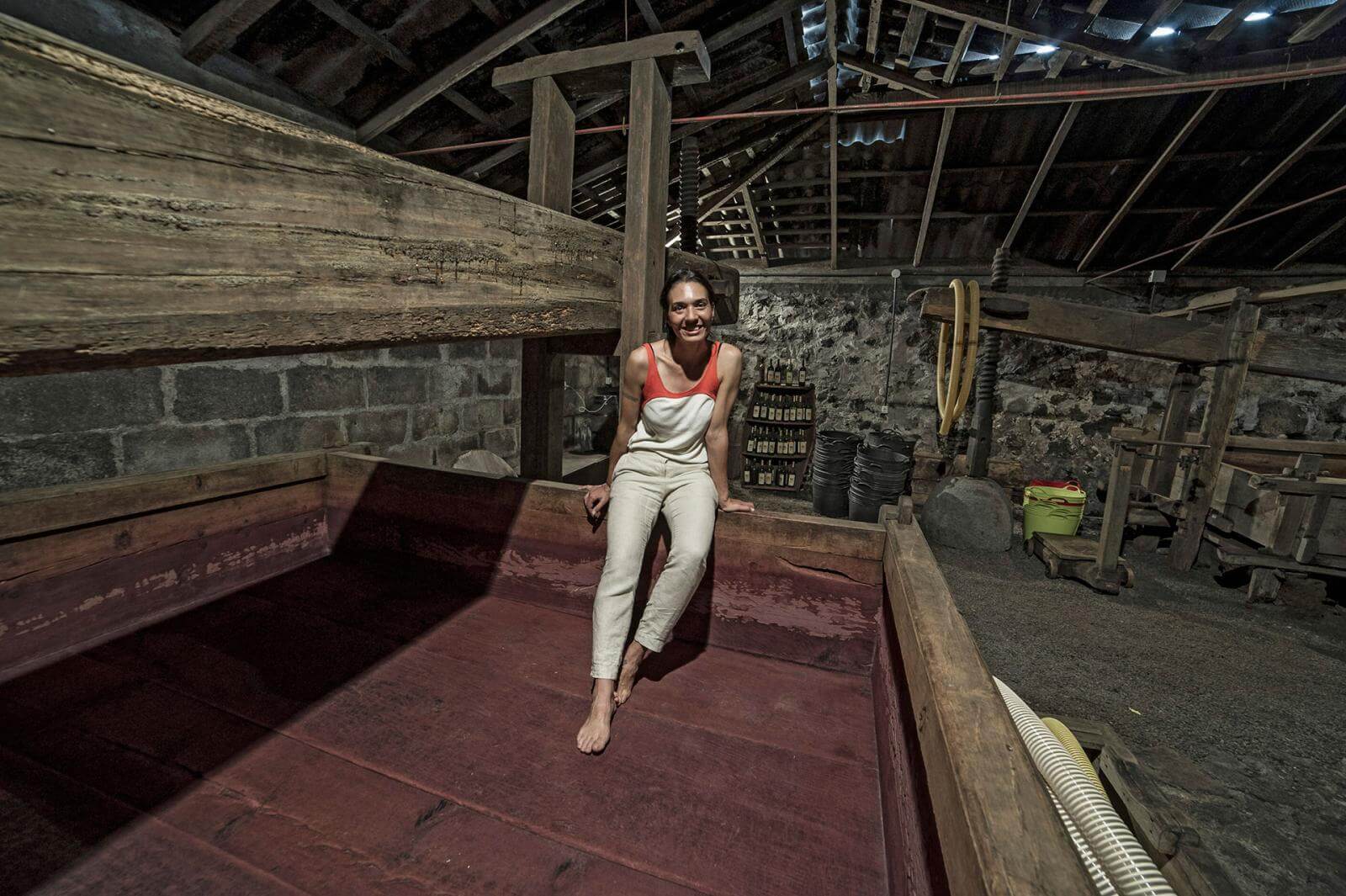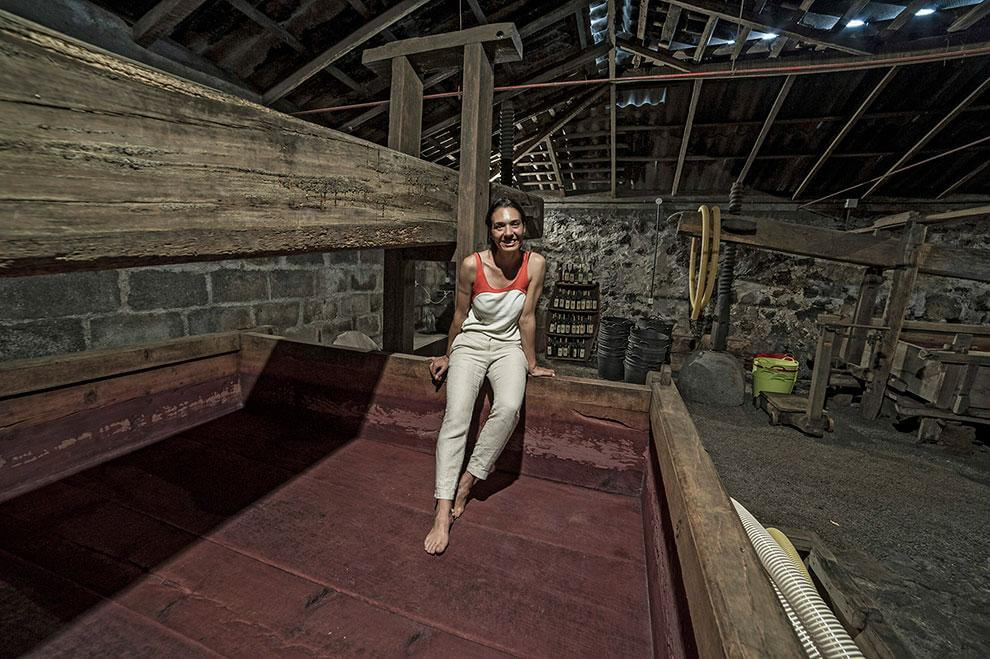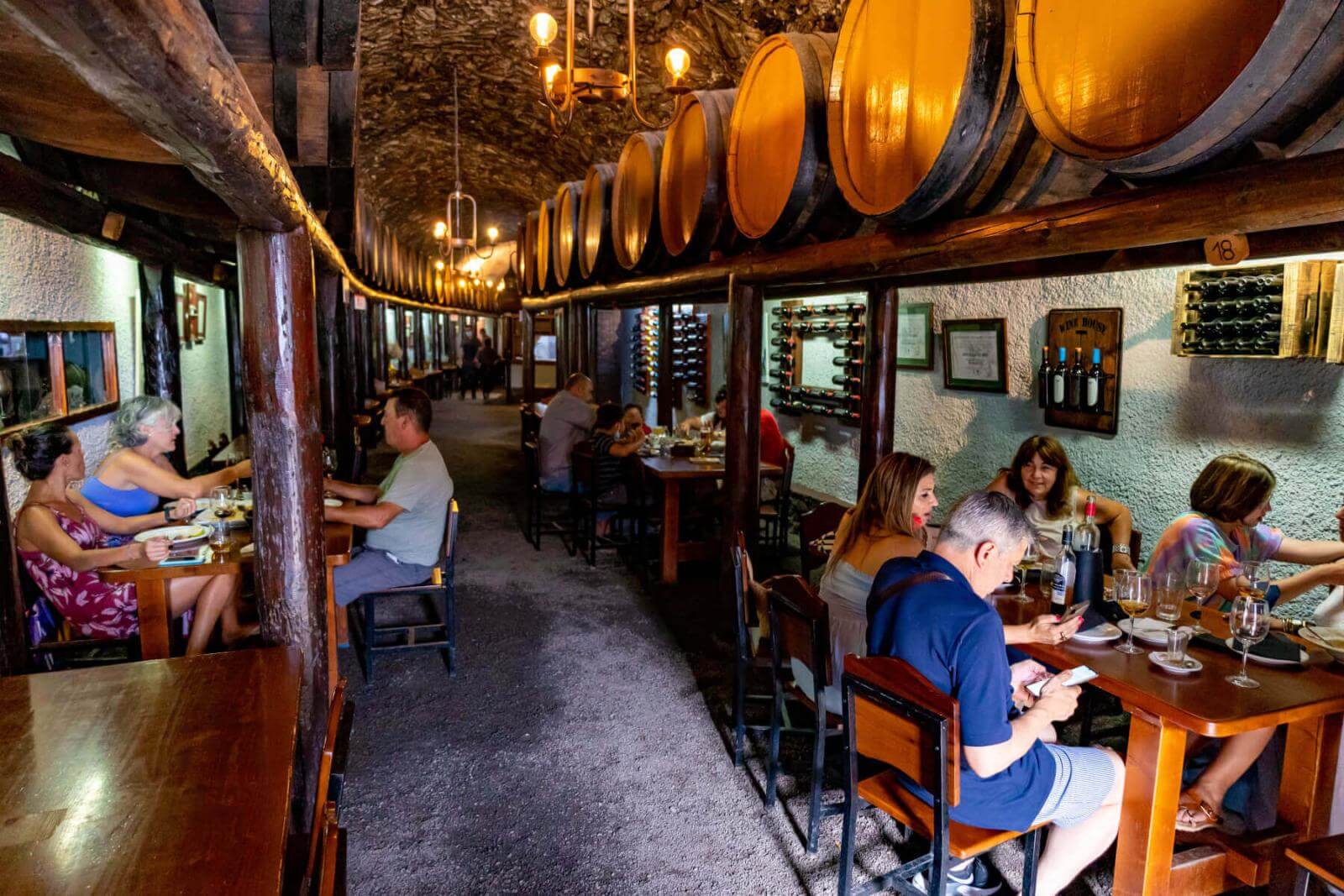Aged in tea barrels, La Palma wines come from vines grown in volcanic soils. These two peculiarities, together with the type of grape, whose varieties predate the arrival of the phylloxera plague, grant this beverage a unique flavor suitable for the most exclusive palates.
To understand the exquisiteness of the wines of La Palma, it is necessary to delve into its traditional and unique way of fermenting grapes in tea barrels, made from Canary pine wood, and its cultivation for centuries in its young lands of volcanic origin. Among the areas where this unique elixir is produced there are different parts of the island such as Puntallana, San Andrés y Sauces, Barlovento, Garafía, Puntagorda or Tijarafe.
Traditional Wine, Wineries with a Long History
La Palma offers many wine cellars for Visitors Who are History Buffs.
To name a few, Bodegas Tamanca, founded in 1996 as a small family business, is located near the Cumbre Vieja area, the site of the last volcanic eruption on the island. The wines from these wineries benefit from the rich volcanic soils, which gives them a wide variety of whites, reds and Malvasia. To reach the wineries, the new Las Manchas road, built after the eruption and accessed from the Tajuya crossroads in the municipality of El Paso, must be used. In addition to a traditional restaurant, these wineries sell wine directly. In fact, the barrels are on the tables of the diners.
Bodega Teneguía, located very close to the town of Fuencaliente, has 70 years of history. Its more than 15 different wines, although not barrel-fermented, are characterized by their grapes grown in volcanic soil, whose last eruption was in 1971, involving the Teneguia volcano. This winery is the oldest of the island as a Cooperative Society, and produces its wines with grapes from its associates spread throughout all the municipalities of La Palma. For interested visitors, the winery has a point of sale where you can also taste their great wines or enjoy a guided tour.
Finally, the wines of Bodega Vega Norte, fermented in tea barrels, come from the municipalities of Garafía, Puntagorda and Tijarafe. The vineyards are located on very steep slopes, cut by numerous deep ravines. This is why most of the vineyards are located at high altitudes, between 1,000 and 1,500 meters above sea level. The winery is located in the municipality of Tijarafe, on the main road between Tijarafe and Puntagorda. There you can buy the wine or, if you wish, make a pairing with their wines and cheeses from La Palma.
Small wineries with big ideas: Tagalguén, Perdomo and Juan María Torres
The Juan Matías Torres Winery is one of the most endearing and international wineries on La Palma. Victoria Torres is the fifth generation of a family of winegrowers who pamper their grapes grown in volcanic soil, and then ferment the wine in their old tea barrels.
Victoria Torres makes all its wines in an artisanal manner, with spontaneous fermentation and no cold control. She follows ecological criteria in the vineyard, shares the biodynamic philosophy and uses plant preparations, but "without impositions". Much of the work, both in the vineyard and in the winery, is still done by hand. The main winery is located in Fuencaliente and its wines are in demand throughout Spain and in countries such as Japan.
Bodegas Perdomo, in the idyllic village of Las Tricias, in the municipality of Garafia, is a small family winery whose plots are located more than 1,200 meters above sea level, and has a Denomination of Origin of La Palma. In the same municipality, the Tagalguén Winery offers high quality organic wine, which is produced in the traditional way.
This is the path of excellence followed by the unique wines of the Isla Bonita, promoted by the Denomination of Origin of Wine of La Palma, which has been distinguishing and certifying the quality of the wines of the island for more than 25 years, not only in these wineries, but in many others that can be consulted on the the Denomination of Origin website.





